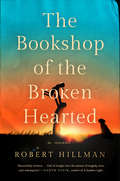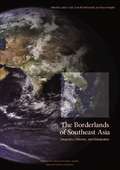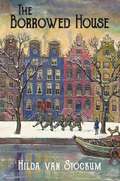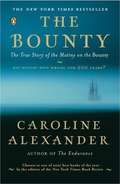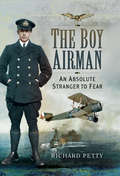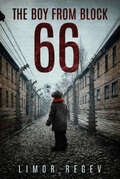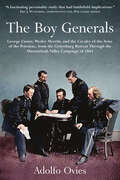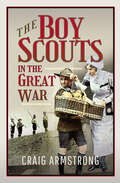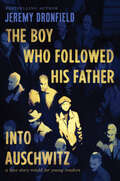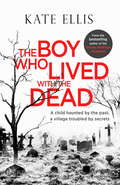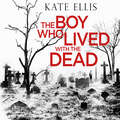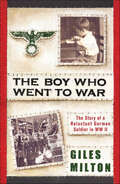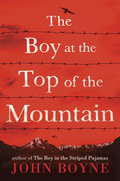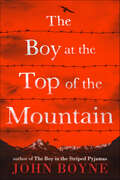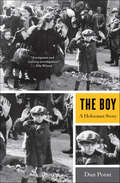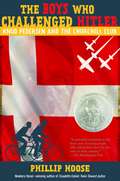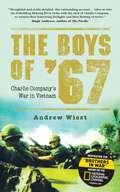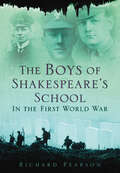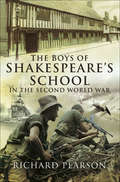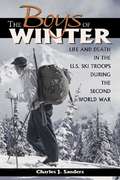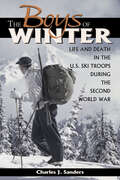- Table View
- List View
The Bookshop of the Broken Hearted
by Robert HillmanIn this tender and wise novel about love and forgiveness in 1960s Australia, a lonely farmer finds his life turned upside down by the arrival of a vibrant bookseller."Beautifully written. . . . Full of insight into the nature of tragedy, love, and redemption." --Garth Stein"Hillman guides us on a poignant journey of unthinkable loss, love, and the healing capacity of the written word." --Ellen Keith, author of The Dutch WifeCan one unlikely bookshop heal two broken souls?It is 1968 in rural Australia and lonely Tom Hope can't make heads or tails of Hannah Babel. Newly arrived from Hungary, Hannah is unlike anyone he's ever met--she's passionate, brilliant, and fiercely determined to open sleepy Hometown's first bookshop. Despite the fact that Tom has only read only one book in his life, when Hannah hires him to install shelving for the shop, the two discover an astonishing spark. Recently abandoned by an unfaithful wife--and still missing her sweet son, Peter--Tom dares to believe that he might make Hannah happy. But Hannah is a haunted woman. Twenty-four years earlier, she had been marched to the gates of Auschwitz.Perfect for fans of The Little Paris Bookshop and The Light Between Oceans, The Bookshop of the Broken Hearted cherishes the power of love, literature, and forgiveness to transform our lives, and--if we dare allow them--to mend our broken hearts.
The Border Men
by Cameron JuddThe second volume in The Tennessee Frontier Trilogy, The Border Men is an adventure saga set in the period from 1778 to 1783. The battle at King's Mountain is the prominent historical context of the novel.
The Borderlands of Southeast Asia: Geopolitics, Terrorism and Globalization
by James Clad Bruce Vaughn Sean M McDonaldAs an academic field in its own right, the topic of border studies is experiencing a revival in university geography courses as well as in wider political commentary. Until recently, border studies in contemporary Southeast Asia appeared as an afterthought at best to the politics of interstate rivalry and national consolidation. The maps set out all agreed postcolonial lines. Meanwhile, the physical demarcation of these boundaries lagged. Large slices of territory, on land and at sea, eluded definition or delineation.That comforting ambiguity has disappeared. Both evolving technologies and price levels enable rapid resource extraction in places, and in volumes, once scarcely imaginable. The beginning of the 21st century's second decade is witnessing an intensifying diplomacy, both state-to-state and commercial, over offshore petroleum. In particular, the South China Sea has moved from being a rather arcane area of conflict studies to the status of a bellwether issue. Along with other contested areas in the western Pacific and south Asia, the problem increasingly defines China's regional relationships in Asia—and with powers outside the region, especially the United States. Yet intraregional territorial differences also hobble multilateral diplomacy to counter Chinese claims, and daily management of borders remains burdened by a lot of retrospective baggage.The contributors to this book emphasize this mix of heritage and history as the primary leitmotif for contemporary border rivalries and dynamics. Whether the region's 11 states want it or not, their bordered identity is falling into ever sharper definition—if only because of pressure from extraregional states. Chapters are organized by country to elicit a broad range of thought and approach as much as for the specific areas or nation-states examined in each chapter. This book aims to provide new ways of looking at the reality and illusion of bordered Southeast Asia.
The Borrowed House
by Hilda Van StockumDuring World War II a young German girl, member of the Hitler Youth, joins her parents in occupied Amsterdam and comes to realize that the war is about more than national pride and destiny; for some it means starvation, separation from loved ones, and gas chambers.
The Boss, the Bride & the Baby: Do You Take This Maverick? The Boss, The Bride And The Baby A Reunion And A Ring (Brighton Valley Cowboys #1)
by Judy DuarteFROM CEO...TO DADDY? Texas tycoon Jason Rayburn had been raised to take charge. To make decisions. To avoid emotion. So when he's forced to return to Brighton Valley to inventory his grandmother's small-town ranch for sale, the executive delegates the work to his new hire, local waitress Juliana Bailey. Jason never mixes business with pleasure, but even he can't ignore his attraction to the redheaded beauty-in spite of the secret she's clearly hiding... For Juliana, the job at the Leaning R was too good to be true, offering her a place to lie low until she could confess her pregnancy to her family-and avoid local scandal. But she hadn't counted on the searing sparks flying with the corporate cowboy! Now, the expectant assistant knows the billionaire boss is no family man. But she'll fight for the right to show him he's got daddy potential!
The Bounty: The True Story of the Mutiny on the Bounty
by Caroline AlexanderMore than two centuries after Master's Mate Fletcher Christian led a mutiny against Lieutenant William Bligh on a small, armed transport vessel called Bounty, the true story of this enthralling adventure has become obscured by the legend. Combining vivid characterization and deft storytelling, Caroline Alexander shatters the centuries-old myths surrounding this story. She brilliantly shows how, in a desperate attempt to save one man from the gallows and another from ignominy, two powerful families came together and began to create the version of history we know today. The true story of the mutiny on the Bounty is an epic of duty and heroism, pride and power, and the assassination of a brave man's honor at the dawn of the Romantic age.
The Boy Airman: An Absolute Stranger to Fear
by Richard PettyThe life of many combatants in The Great War was often short and brutish. But there were choices for some. Taking to the air was an attractive alternative to the slime, stench and gore of the trenches. The prospect of flying in the Royal Navy, the Senior Service, Nelson's Navy, must have been irresistible to any adventurous teenager the best aeroplanes on the best ships with the best sailors that ever existed or so he might have been led to believe. The Royal Naval Air Service was sorely tested, and not necessarily by the enemy. The casualties of the sea and its perils, and of accident and mechanical failure, were catastrophic. But this critical battle between young pilots in their infant flying machines and unpredictable events forged the pathway for our modern conceits of war missiles, drones, giant aircraft carriers, weapons of space. A hundred years ago a young pilot took illicit photographs with his pocket camera and left a personal account of his life at sea with his 'kite'. This book tells his story illustrated by his long-lost 'snaps'.
The Boy From Block 66 (Heroic Children of World War II)
by Limor RegevJanuary, 1945. 14-year-old Moshe Kessler steps off the train at Buchenwald concentration camp. Having endured the horrors of Auschwitz-Birkenau, lost touch with his entire family, and survived the death march in the freezing European winter, he has seen more than his share of tragedy. Moshe knows only one thing about Buchenwald. Everyone knows it. If you want to survive, you have to get to Block 66. The Germans are cruel and determined – but they are not prepared for Buchenwald’s secret resistance, which rises up with one mission only: to protect the camp’s children from harm. This is the incredible true story of Moshe Kessler and Block 66 – the children’s block that was at the forefront of one of the most shocking and inspiring stories of Holocaust survival.
The Boy Generals: From the Gettysburg Retreat Through the Shenandoah Valley Campaign of 1864
by Adolfo Ovies“Al Ovies combines an impressive array of source material and intricate analysis to craft a historical gem. This is a must-read for anyone interested in Civil War cavalry and later war actions in the Eastern Theater.” — Scott Patchan, author of The Last Battle of Winchester The second installment of Al Ovies’ The Boy Generals trilogy, George Custer, Wesley Merritt and the Cavalry of the Army of the Potomac, from the Gettysburg Retreat through the Shenandoah Valley Campaign of 1864, encompasses a period jammed with tumultuous events for the cavalry on and off the battlefield and a significant change of command at the top. Once below the Potomac River, the Union troopers raced down the east side of the Blue Ridge Mountains but were unable to prevent General Lee’s wounded Army of Northern Virginia from reaching Culpeper. The balance of the 1863 was a series of maneuvers, raids, and fighting that witnessed the near-destruction of the Michigan Cavalry Brigade at Buckland Mills and the indecisive and frustrating efforts of the Bristoe Station and Mine Run campaigns. Alfred Pleasonton’s controversial command of the mounted arm ended abruptly, only to be replaced by the more controversial Philip H. Sheridan, whose combustible personality intensified the animosity burning between George Custer and Wesley Merritt. Victory and glory followed the Cavalry Corps during the early days of Overland campaign, particularly at Yellow Tavern, where Rebel cavalier Jeb Stuart was mortally wounded. The “spirited rivalry” between Custer and Merritt, in turn, took a turn for the worse. At Trevilian Station, the bitterness and rancor permeating their relationship broke into the open to include harsh official reports critical of the other’s actions. Merritt’s elevation to temporary command of the 1st Cavalry Division cemented their rancor. Just as their relationship worsened, so too did the tenor of the war darken as the sieges of Richmond and Petersburg ground on, and Confederate partisan Col. John S. Mosby intensified guerrilla operations that disrupted Union logistics in the Shenandoah Valley. When Gen. Ulysses Grant demanded that Sheridan escalate retribution, the cavalry commander delivered his infamous edict to “eat out Virginia clear and clean as far as they go, so that crows flying over it for the balance of the season will have to carry their provender with them.” Much of the gritty task fell on the shoulders of the boy generals. Adolfo Ovies’ well-researched and meticulously detailed account of the increasingly dysfunctional relationship between Custer and Merritt follows the same entertaining style in the first installment. The Boy Generals changes the way Civil War enthusiasts will understand and judge the actions of the Union’s bold riders.
The Boy Scouts in the Great War
by Craig ArmstrongThe Boy Scouts Association was just seven years old when war broke out in 1914. With its members brought up with a strong ethos of duty and loyalty, it was no surprise that many wanted to play the best role possible in the nation’s war effort. Many members were amongst those who rallied to the colors and enlisted in the heady days of the first weeks and months of the war. Some already belonged to either the Reserves or the Territorials and so found themselves immediately thrust into the front lines and casualty rates were high. Several of those who fought were decorated for their service, with a number even wining the Victoria Cross. On the Home Front, Boy Scouts served as messengers, printers, dispatch riders etc. in the War Office and other government offices, both locally and nationally. Scouts helped gather in the harvest, hunted for spies, aided the civil and military authorities, maintained watch during air raids, helped various wartime charities and sold old bottles to raise funds for recreational huts and ambulances for the front. Others found themselves mounting guard on the coasts and on vulnerable points such as the railway network, or aiding recruitment efforts across the country. The Boy Scout became a trusted and common sight on the streets of the country and the contribution they made was great indeed.
The Boy Who Followed His Father into Auschwitz: A True Story Retold for Young Readers
by Jeremy DronfieldThis powerful, moving middle grade adaptation of the adult international bestselling narrative nonfiction book The Boy Who Followed His Father into Auschwitz shines a light on the true story of two brothers who experienced the atrocities of the Holocaust in very different ways.Fritz Kleinmann was fourteen when the Nazis took over Vienna. Kurt, his little brother, was eight. Under Hitler’s brutal regime, their Austrian-Jewish family of six was cruelly torn apart.Taken to Buchenwald concentration camp, Fritz and his Papa, Gustav, underwent hard labor and starvation. Meanwhile, Kurt made the difficult voyage, all alone, to America, to escape the war.When Papa was ordered to the infamous Auschwitz concentration camp, Fritz—desperate not to lose his beloved father—insisted he must go too. Together, they endured countless atrocities to survive.Jeremy Dronfield authentically and accurately captures this family tale of bravery, love, hope, and survival with the help of extensive research and primary sources like Gustav’s diary and interviews with family members. Maps, black-and-white photos, a timeline of events, a glossary, and more are included.
The Boy Who Lived with the Dead (Albert Lincoln #2)
by Kate Ellis'Haunting' Independent'A powerful story of loss, malice and deception' Ann Cleeves'A splendidly macabre thriller' Andrew Taylor1920. Scotland Yard detective DI Albert Lincoln is still reeling from the disturbing events of the previous year when he's called away from London to a new case in the North West of England. Before the War he led the unsuccessful investigation into the murder of little Jimmy Rudyard in the village of Mabley Ridge. Now a woman has been murdered there and another child is missing, the sole witness being a traumatised boy who lives in a cemetery lodge. Albert is determined that this time him he will find the truth . . . and the missing child.When Albert delves into the lives of the village residents he uncovers shocking secrets and obsessions. Then, as more bodies are discovered, he realises that his young witness from the cemetery lodge is in grave danger, from somebody he calls 'the Shadow Man'.As Albert discovers more about the victims he finds information that might bring him a step closer not only to Jimmy's killer but to solving a mystery of his own: the whereabouts of his lost son.The second historical thriller in the Albert Lincoln series by award-winning crime writer Kate Ellis. An atmospheric, spellbinding mystery set in the aftermath of the Great War.What readers are saying about The Boy Who Lived with the Dead:'Outstanding' Goodreads reviewer, 5 stars'A fantastic read which kept me guessing right until the last few pages' Goodreads reviewer, 5 stars'Superb!' Goodreads reviewer, 5 stars'Compulsive reading . . . very cleverly constructed with plenty of twists' Goodreads reviewer, 5 stars'Hard to put the book down' Goodreads reviewer, 5 stars'[Kate Ellis] must be a genius' Goodreads reviewer, 5 stars'Excellent' Goodreads reviewer, 5 stars
The Boy Who Lived with the Dead (Albert Lincoln #2)
by Kate EllisA child haunted by the past. A village troubled by secrets.'A powerful story of loss, malice and deception' Ann CleevesThe second historical thriller in the Albert Lincoln series by bestselling crime writer Kate Ellis. 1920. Scotland Yard detective DI Albert Lincoln is still reeling from the disturbing events of the previous year when he's called away from London to a new case in the North West of England. Before the War he led the unsuccessful investigation into the murder of little Jimmy Rudyard in the village of Mabley Ridge. Now a woman has been murdered there and another child is missing, the sole witness being a traumatised boy who lives in a cemetery lodge. Albert is determined that this time him he will find the truth . . . and the missing child.When Albert delves into the lives of the village residents he uncovers shocking secrets and obsessions. Then, as more bodies are discovered, he realises that his young witness from the cemetery lodge is in grave danger, from somebody he calls 'the Shadow Man'.As Albert discovers more about the victims he finds information that might bring him a step closer not only to Jimmy's killer but to solving a mystery of his own: the whereabouts of his lost son.What readers are saying about The Boy Who Lived with the Dead:'Outstanding' Goodreads reviewer, 5 stars'A fantastic read which kept me guessing right until the last few pages' Goodreads reviewer, 5 stars'Superb!' Goodreads reviewer, 5 stars'Compulsive reading . . . very cleverly constructed with plenty of twists' Goodreads reviewer, 5 stars'Hard to put the book down' Goodreads reviewer, 5 stars'[Kate Ellis] must be a genius' Goodreads reviewer, 5 stars'Excellent' Goodreads reviewer, 5 stars
The Boy Who Went to War: The Story of a Reluctant German Soldier in WWII
by Giles MiltonA powerful and true story of warfare and human survival that exposes a side of World War II that is unknown by many— this is the story of Wolfram Aïchele, a boy whose childhood was stolen by a war in which he had no choice but to fight.Giles Milton has been a writer and historian for many years, writing about people and places that history has forgotten. But it took his young daughter's depiction of a swastika on an imaginary family shield - the swastika representing Germany - for Giles to uncover the incredible, dark story of his own family and his father-in-law's life under Hitler's regime.As German citizens during World War II, Wolfram and his Bohemian, artist parents survived one of the most brutal eras of history. Wolfram, who was only nine years old when Hitler came to power, lived through the rise and fall of the Third Reich, from the earliest street marches to the final defeat of the Nazi regime. Conscripted into Hitler's army, he witnessed the brutality of war - first on the Russian front and then on the Normandy beaches. Seen through German eyes and written with remarkable sensitivity, The Boy Who Went to War is a powerful story of warfare and human survival and a reminder to us all that civilians on both sides suffered the consequences of Hitler's war.
The Boy at the Top of the Mountain
by John BoyneThe powerful, unforgettable new novel from the bestselling author of The Boy in the Striped Pajamas, for ages 12+.When Pierrot becomes an orphan, he must leave his home in Paris for a new life with his Aunt Beatrix, a servant in a wealthy household at the top of the German mountains. But this is no ordinary time, for it is 1935 and the Second World War is fast approaching; and this is no ordinary house, for this is the Berghof, the home of Adolf Hitler. Quickly, Pierrot is taken under Hitler's wing, and is thrown into an increasingly dangerous new world: a world of terror, secrets and betrayal, from which he may never be able to escape.
The Boy at the Top of the Mountain
by John BoyneThe Boy at the Top of the Mountain by John Boyne, the author of The Boy in the Striped Pajamas, is another extraordinary historical fiction about World War II and innocence in the face of evil. When Pierrot becomes an orphan, he must leave his home in Paris for a new life with his aunt Beatrix, a servant in a wealthy Austrian household. But this is no ordinary time, for it is 1935 and the Second World War is fast approaching; and this is no ordinary house, for this is the Berghof, the home of Adolf Hitler.Pierrot is quickly taken under Hitler's wing and thrown into an increasingly dangerous new world: a world of terror, secrets, and betrayal from which he may never be able to escape. This title has Common Core connections.
The Boy on the Beach
by Mary Towne[from the back cover:] "A summer--and a boy- she would never forget. It's August 1943. On foreign shores American soldiers are battling the enemy in World War II. On the homefront a polio epidemic is striking down America's children. Ruth Owen is fighting some battles of her own. She's worried about skipping a year in school and being the youngest in her class. And her best friend seems to have forgotten her. Ruth wishes the summer would last forever, and that she could spend every day near the ocean at Jones Beach. She has become friends with a lifeguard named Russ, who seems to understand her fears and worries. But Ruth begins to wonder why Russ is safely at home when so many other young men have been sent overseas to fight. Could he be a draft dodger? Then Ruth learns a secret about Russ, and she begins to understand that true courage sometimes comes from unexpected places."
The Boy with the Star Tattoo: A Novel
by Talia CarnerFrom acclaimed author of The Third Daughter comes an epic historical novel of ingenuity and courage, of love and loss, spanning postwar France when Israeli agents roamed the countryside to rescue hidden Jewish orphans—to the 1969 daring escape of the Israeli boats of Cherbourg.1942: As the Vichy government hunts for Jews across France, Claudette Pelletier, a young and talented seamstress and lover of romance novels, falls in love with a Jewish man who seeks shelter at the château where she works. Their whirlwind and desperate romance before he must flee leaves her pregnant and terrified.When the Nazis invade the Free Zone shortly after the birth of her child, the disabled Claudette is forced to make a heartbreaking choice and escapes to Spain, leaving her baby in the care of his nursemaid. By the time Claudette is able to return years later, her son has disappeared. Unbeknown to his anguished mother, the boy has been rescued by a Youth Aliyah agent searching for Jewish orphans.1968: When Israeli naval officer Daniel Yarden recruits Sharon Bloomenthal for a secret naval operation in Cherbourg, France, he can’t imagine that he is the target of the agenda of the twenty-year-old grieving the recent loss of her fiancé in a drowned submarine. Sharon suspects that Danny's past in Youth Aliyah may reflect that of her mysterious late mother and she sets out to track her boss’s extraordinary journey as an orphan in a quaint French village all the way to Israel.As Danny focuses on the future of his people and on executing a daring, crucial operation under France’s radar, he is unaware that the obsessed Sharon follows the breadcrumbs of clues across the country to find her answers. But she is wholly unprepared for the dilemma she must face upon solving the puzzle.
The Boy: A Holocaust Story
by Dan PoratA cobblestone road. A sunny day. A soldier. A gun. A child, arms high in the air. A moment captured on film. But what is the history behind arguably the most recognizable photograph of the Holocaust? In The Boy: A Holocaust Story, the historian Dan Porat unpacks this split second that was immortalized on film and unravels the stories of the individuals—both Jews and Nazis—associated with it.The Boy presents the stories of three Nazi criminals, ranging in status from SS sergeant to low-ranking SS officer to SS general. It is also the story of two Jewish victims, a teenage girl and a young boy, who encounter these Nazis in Warsaw in the spring of 1943. The book is remarkable in its scope, picking up the lives of these participants in the years preceding World War I and following them to their deaths. One of the Nazis managed to stay at large for twenty-two years. One of the survivors lived long enough to lose a son in the Yom Kippur War. Nearly sixty photographs dispersed throughout help narrate these five lives. And, in keeping with the emotional immediacy of those photographs, Porat has deliberately used a narrative style that, drawing upon extensive research, experience, and oral interviews, places the reader in the middle of unfolding events.
The Boys Who Challenged Hitler: Knud Pedersen and The Churchill Club
by Phillip HooseAt the outset of World War II, Denmark did not resist German occupation. Deeply ashamed of his nation's leaders, fifteen-year-old Knud Pedersen resolved with his brother and a handful of schoolmates to take action against the Nazis if the adults would not. <P><P>Naming their secret club after the fiery British leader, the young patriots in the Churchill Club committed countless acts of sabotage, infuriating the Germans, who eventually had the boys tracked down and arrested. But their efforts were not in vain: the boys' exploits and eventual imprisonment helped spark a full-blown Danish resistance. <P>Interweaving his own narrative with the recollections of Knud himself, here is Phillip Hoose's inspiring story of these young war heroes.
The Boys of '67
by Andrew WiestIn the spring of 1966, while the war in Vietnam was still popular, the U.S. military decided to reactivate the 9th Infantry Division as part of the military buildup. Across the nation, farm boys from the Midwest, surfers from California, city-slickers from Cleveland, and share croppers from the South opened their mail to find greetings from Uncle Sam. The newly-shorn men in their ill-fitting uniforms got off the busses together at Fort Riley, Kansas, to be trained together under the tutelage of officers and non-commissioned officers (NCOs) who would lead them into battle in Vietnam. Charlie Company was part of the 9th and was representative of the greater whole. Everyone was there in the newly-raised company - the joker who roller skated into the Company First Sergeant's office wearing a dress, the nerdy guy with two left feet who would rather be off somewhere inventing computers, the gung-ho true believers bent on outshining everyone else, the everyman who just wanted to get through un-noticed, the guys who liked Motown, the guys who liked country music. Most American soldiers of the Vietnam era trickled into the war zone as individual replacements for men who had become casualties or had rotated home, embarking on a wartime experience unparalleled in its individualism. Charlie Company, though, was different, part of the only division raised, drafted and trained for service in the Vietnam War. During their training, the men of Charlie Company, a unit almost entirely composed of draftees, became a family without ever really knowing it. Its members entered Vietnam as brothers, sometimes squabbling, sometimes joking, sometimes missing their wives and children, but always brothers. Charlie Company was a throwback, part of an old breed. Charlie Company's experience of being drafted, thrown together, and trained for war hearkened back to the very heart of the American military tradition, a tradition that came to an end in Vietnam. A tradition that might never return, leaving Charlie Company historically the last of its kind. This is their story. From draft to the battlefields of South Vietnam, this is the unvarnished truth from the fear of death, the chaos of battle, the horrors of injury told through the recollections of the men themselves.
The Boys of Shakespeare's School in the First World War: In the First World War
by Richard PearsonLike many young men of the time, the boys of King Edward VI School saw the outbreak of the First World War as an opportunity for bravery and excitement. By the time the Armistice was signed in late 1918, thirty-one old boys and one Master had been killed. For such a small grammar school the cost was significant, as too were the number of awards for gallantry, including a Victoria Cross. Set against Stratford-upon-Avon and the boys’ schooldays, this intriguing book details the boys’ war and their involvement in the major battles on the Western Front, in Italy, Salonika, Macedonia, Gallipoli, Bulgaria and Russia. Ultimately a tragic and moving account, it captures the heart of a small community and represents the sense of adventure with which young men went to war.
The Boys of Shakespeare's School in the Second World War
by Richard Pearson&“The story of the King Edward VI grammar school in Stratford-upon-Avon and its sacrifice in the Second World War . . . a heavy price for just one school.&” —War History Online Like the Great War generation before them, the Old Boys of King Edward VI School, Stratford-upon-Avon, (known as Shakespeare&’s School) answered the Nations call to arms in 1939. Over the next six years, no less than fifty-two of these young men fought and died for their Country. This evocative and carefully researched book tells each one&’s story. The author paints a picture of the character of the individual concerned, along with his family background, his contribution to the School and, most importantly, his war service and the circumstances of his death. Some perished in lonely cockpits during the Battle of Britain and the Bombing campaign. Others fought and died at sea whether on Atlantic convoys, the Mediterranean campaign or in the Far East. The soldiers among them fell in the glare of the Western Desert fighting the Germans and Italians and in the unforgiving jungles of Burma repulsing the Japanese. In one case, death came in a German concentration camp. Who can tell what influence the strong ethos of this small grammar school with its enduring values of decency and comradeship had played during the years of hostilities on both those who made the supreme sacrifice and others who were fortunate enough to survive? What is certain is that the example set by those former members of Shakespeare&’s School whose stories are told in this book must never be forgotten by their successors.
The Boys of Winter
by Charles J. SandersThe Boys of Winter tells the true story of three young American ski champions and their brutal, heroic, and fateful transformation from athletes to infantrymen with the 10th Mountain Division. Charles J. Sanders's fast-paced narrative draws on dozens of interviews and extensive research to trace these boys' lives from childhood to championships and from training at Mount Rainier and in the Colorado Rockies to battles against the Nazis.
The Boys of Winter: Life and Death in the U.S. Ski Troops During the Second World War
by Charles J. Sanders"An immensely valuable and substantial addition to 10th Mountain literature and to the history of skiing in the United States." - International Ski History Association The Boys of Winter tells the true story of three young American ski champions and their brutal, heroic, and fateful transformation from athletes to infantrymen with the 10th Mountain Division. Charles J. Sanders's fast-paced narrative draws on dozens of interviews and extensive research to trace these boys' lives from childhood to championships and from training at Mount Rainier and in the Colorado Rockies to battles against the Nazis.
